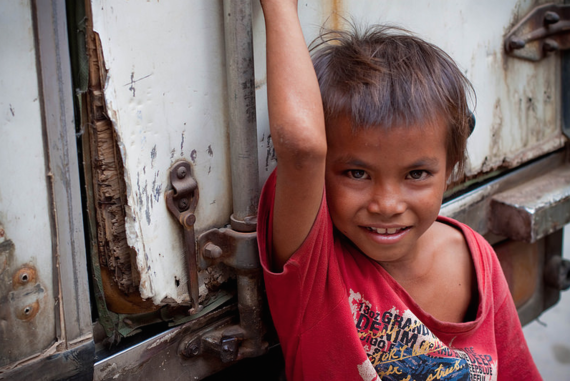A quiet, but alarming, trend is happening in Cambodian "orphanages." Instead of predominantly serving the needs of children whose parents have died, these institutions are increasingly being filled with children from poor families whose living parents are seeking better opportunities for their children's future. It's a phenomenon that my colleagues and I at Columbia's Mailman School of Public Health, together with a number of committed partners, are working to correct.
There's a long history of parents sending their children to places in the hopes that they will have a safer or better childhood. But typically those places involve the care of a relative or an adopted family, where the expectation is that the child will have a loving home life. Parents typically don't elect to send their children to live in institutions. Yet that's exactly what's been happening in Cambodia, because more and more parents see institutional care as the most direct route to social mobility.
For families living in poverty, these facilities fill in the gaps left by an inadequate social welfare system. My research recently took me to rural Cambodia, where the best educational opportunity available for one's child is a one-room schoolhouse with one teacher for all age groups. In that situation, it suddenly became clear to me why parents would prefer to send their children to "orphanages" that promise to feed and educate their children, appeals that often represent false promises more than reality.
The public health challenge arises when a significant part of an entire generation is being institutionalized, as is now the case in Cambodia. This trend runs counter to research that shows that growing up in a family, however it is constructed, usually leads to the healthiest children across all areas of development. Beginning in the mid-20th century, evidence emerged about the negative effect of institutional care on early childhood development. As a result, the United States and Western Europe dramatically cut down on the overall number of orphanages and limited their use to children who could not safely be placed with some type of family.
Research shows that the best environment for child development is a setting that involves secure and stable relationships — ones that create caregiver-child attachments and provide the basis for learning, exploration, and positive modeling of future relationships in adulthood. Institutional care — where children lack individual caregivers and the turnover of staff, volunteers and yes, children, is frequent — significantly disrupts this vital process.
Cambodian children growing up in institutions are likely to suffer consequences for their entire lives. Adults who report suffering adverse childhood experiences are at increased risk for a variety of mental health disorders and greater rates of substance use, heart disease, obesity, and other disorders. The risk of poor health later in life grows as the number of adverse childhood experiences increases. The long-term effect of poor health among this population includes limited ability to participate in the economy and widening health inequity.
In addition, in Cambodia, the way that these "orphanages" are run is of concern. As Bruce Grant, Chief of Child Protection for UNICEF, says of them, "Many of those institutions aren't operating in the best interests of children." Sebastian Marot, Founder and Executive Director of Friends International, reminds us that in Cambodia, "The number of orphanages has increased; the number of kids in these orphanages has increased, and that makes no sense. Most of the children are not real orphans." Moreover, institutional care is costly, and as the number of facilities increases, their maintenance diverts government and charitable support away from other public initiatives that could provide better care more broadly, creating a cycle of demand.
The first step in improving public policy on this topic is to understand the scope of the problem. As Sean Callahan, Acting Mission Director for USAID in Cambodia, says, "We really don't know how many children are in institutions, living on the street, living in informal settings."
Any intervention to reduce the number of children living away from families will require an appropriate level of funding and the coordination of several different sectors. In order to make the most informed decisions in such a complex undertaking, the importance of baseline measures cannot be overstated.
At the Mailman School, my colleagues and I led a study to assess the size of the problem in Cambodia. Our research, which you can explore in a new video, is part of a broader U.S. Government initiative called the Action Plan on Children in Adversity, and we've partnered with the Cambodian National Institute of Statistics, UNICEF, Friends International, and Moulathan Consulting to carry out this important work. Our surveyors traveled the country to tally the number of children living in institutions, assess literacy and health, and explore the reasons why children entered institutional care, whether or not they had parents and, if they did, whether their parents lived nearby.
The results of our research will be published in coming weeks. Too often, vulnerable children everywhere are kept out of sight and forgotten. We need to understand their circumstances so we can find ways to give them a better shot at a happy and secure future.


